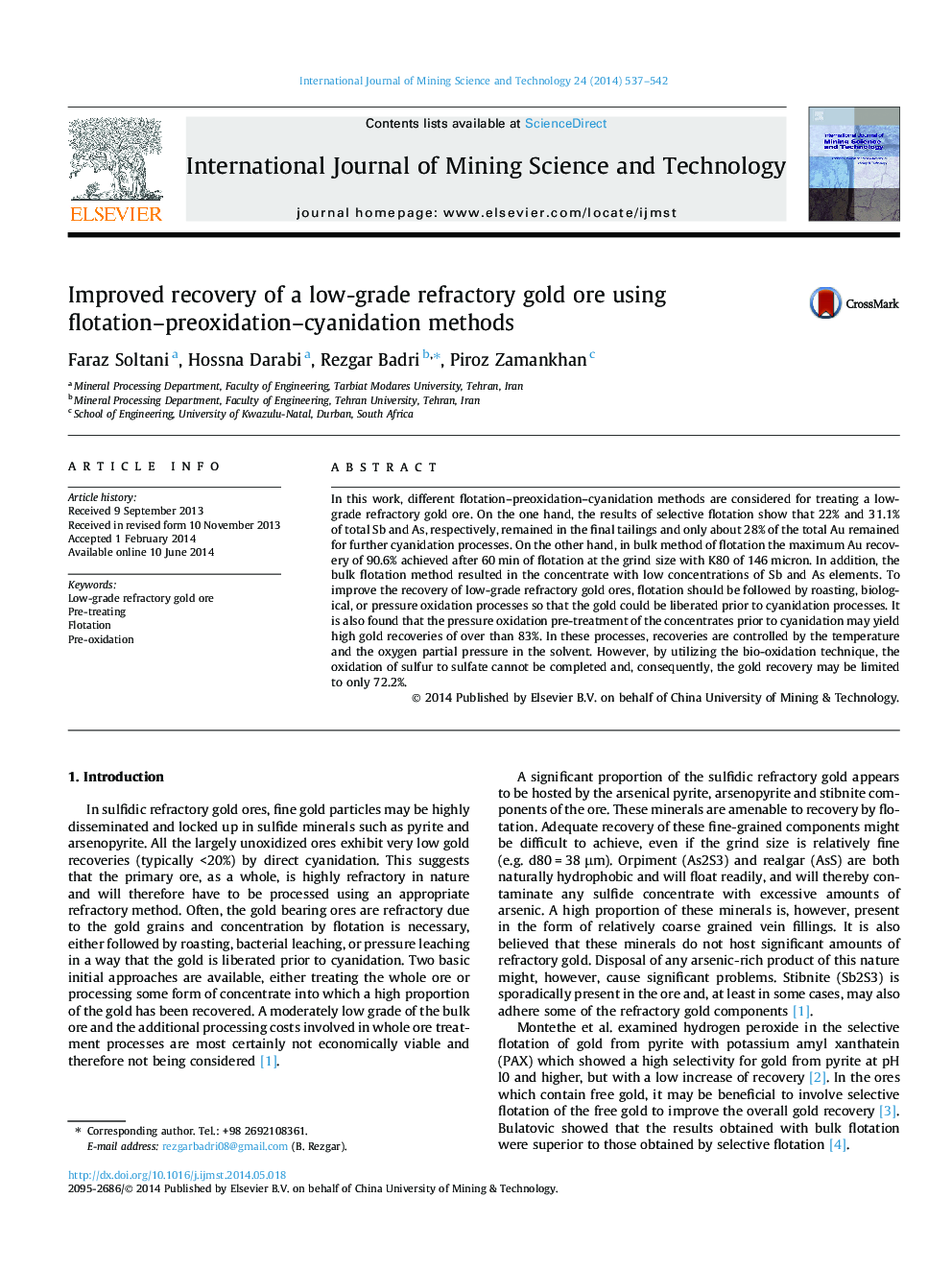| Article ID | Journal | Published Year | Pages | File Type |
|---|---|---|---|---|
| 276152 | International Journal of Mining Science and Technology | 2014 | 6 Pages |
In this work, different flotation–preoxidation–cyanidation methods are considered for treating a low-grade refractory gold ore. On the one hand, the results of selective flotation show that 22% and 31.1% of total Sb and As, respectively, remained in the final tailings and only about 28% of the total Au remained for further cyanidation processes. On the other hand, in bulk method of flotation the maximum Au recovery of 90.6% achieved after 60 min of flotation at the grind size with K80 of 146 micron. In addition, the bulk flotation method resulted in the concentrate with low concentrations of Sb and As elements. To improve the recovery of low-grade refractory gold ores, flotation should be followed by roasting, biological, or pressure oxidation processes so that the gold could be liberated prior to cyanidation processes. It is also found that the pressure oxidation pre-treatment of the concentrates prior to cyanidation may yield high gold recoveries of over than 83%. In these processes, recoveries are controlled by the temperature and the oxygen partial pressure in the solvent. However, by utilizing the bio-oxidation technique, the oxidation of sulfur to sulfate cannot be completed and, consequently, the gold recovery may be limited to only 72.2%.
